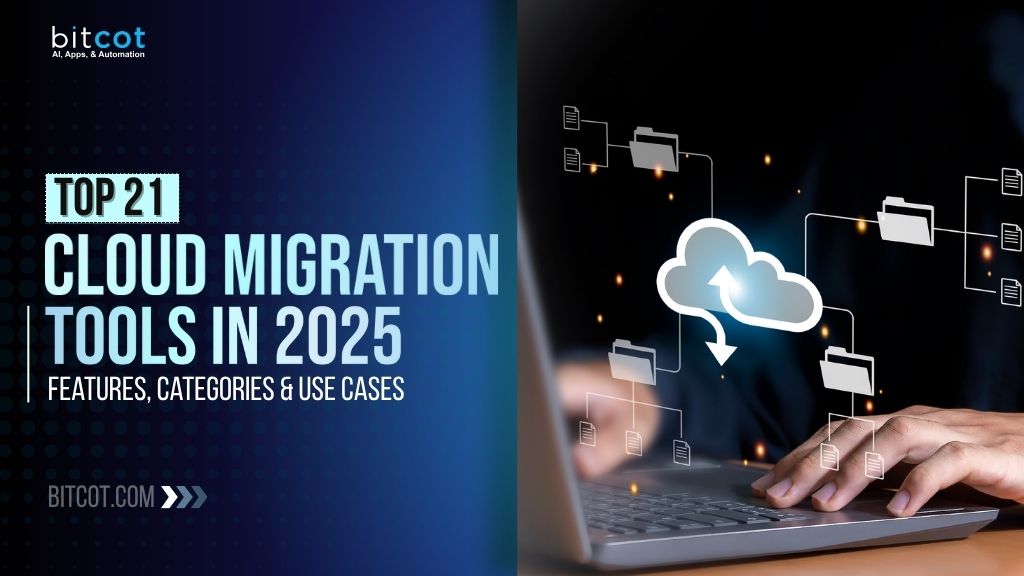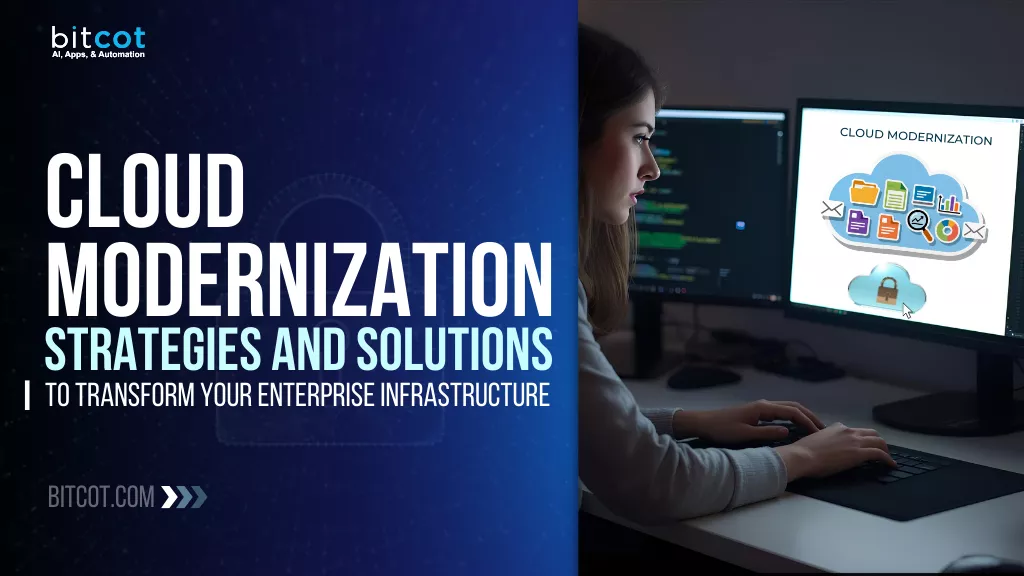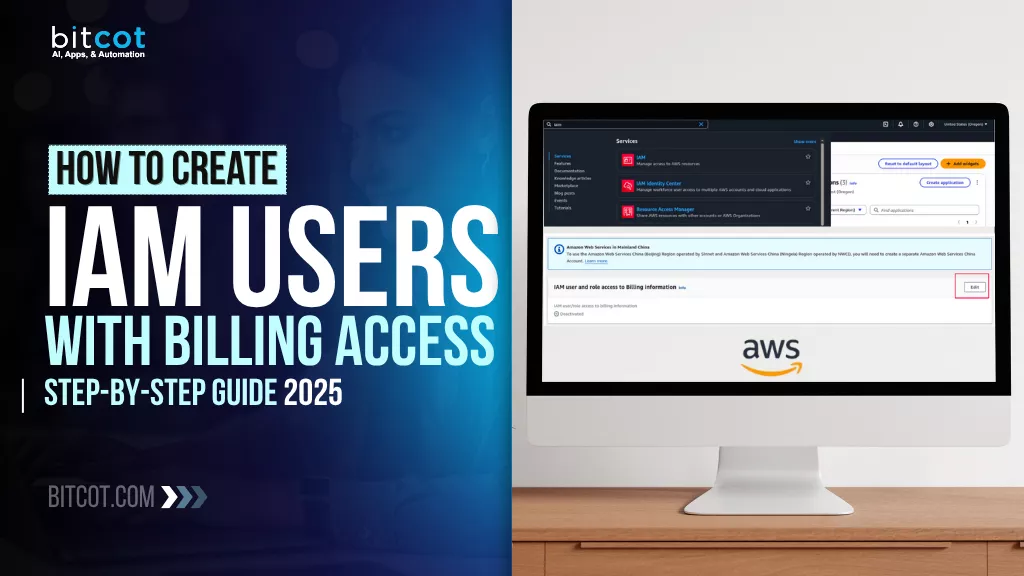
Why do some organizations seamlessly transition to the cloud while others face catastrophic failures that cost millions and threaten their survival?
Every day, business leaders grapple with a critical decision: how to migrate to the cloud without risking everything they’ve built. The stakes couldn’t be higher. When cloud migrations fail, they don’t just disrupt operations. They destroy customer trust, hemorrhage revenue, and end careers.
Here’s the sobering reality: 74% of enterprise cloud migration projects fail or suffer devastating delays. These aren’t just statistics. They represent real companies with real consequences. Imagine discovering at 3 AM that your “simple” migration has gone wrong. Systems are down. Customers can’t access your services. Your phone won’t stop ringing. Every minute of downtime costs thousands, and the pressure is mounting.
What separates success stories from disasters? It’s not just strategy or budget. It’s choosing the right tools to execute your migration plan.
Think about it. Would you drive cross-country without a tested vehicle or a map? Yet many organizations do the same with cloud migrations. They plan for months but rush tool selection, often relying on whatever the provider suggests.
That approach is not just risky. It is potentially catastrophic. With evolving threats, strict compliance, and no tolerance for downtime, there is no room for error.
But what if you could dramatically increase your chances of success? What if you could learn from organizations that got it right?
That is exactly what this guide offers. We will explore 21 top cloud migration tools across seven key categories. You will discover features, best use cases, and real-world examples.
Whether it is your first migration or a recovery from past challenges, this guide will help you choose the right tools, avoid common pitfalls, and lead a successful digital transformation.
What Are Cloud Migration Tools and Why Every Business Needs Them in 2025
A cloud migration solution is a specialized software platform designed to automate, orchestrate, and monitor the transfer of applications, data, and infrastructure from on-premises environments to cloud platforms or between different cloud providers.
These cloud migration software platforms handle multiple types of workloads including virtual machines, applications, databases, and storage systems. They provide automation capabilities that reduce manual intervention, minimize human error, and ensure consistent migration processes across your entire IT infrastructure.
The core purpose extends beyond simple data transfer. Modern cloud migration app technologies offer real-time replication, dependency mapping, performance optimization, and rollback capabilities that make the difference between a smooth transition and a business-disrupting disaster.
Common migration scenarios these platforms address include on premise to cloud migration tools workflows, cloud-to-cloud transfers for multi-cloud strategies, and hybrid cloud deployments that maintain some resources on-premises while moving servers to cloud environments.
Why Cloud Migration Strategy Fails Without the Right Migration Tools
Having a solid cloud migration strategy is essential, but strategy without execution tools is like having a blueprint without construction equipment. Here’s why cloud migration solutions are non-negotiable:
Complexity at Scale: Enterprise environments often contain hundreds or thousands of interconnected applications, databases, and services. Manual migration approaches simply cannot handle this complexity while maintaining business continuity.
Downtime Costs: Every minute of unplanned downtime costs enterprises an average of $9,000. Cloud migration monitoring capabilities with live replication can reduce downtime from days to hours or even minutes.
Hidden Dependencies: Applications rarely exist in isolation. They depend on databases, APIs, network configurations, and other services. Migration tools for cloud environments provide dependency mapping that reveals these connections before they cause problems.
Compliance and Security: Regulated industries need tools that maintain data integrity, provide audit trails, and ensure compliance throughout the migration process.
Resource Optimization: The best cloud migration tool helps identify opportunities to rightsrize resources, eliminate redundancies, and optimize costs during the transition.
What Are the Different Types of Cloud Migration Tools
Understanding the various categories of migration tools is crucial for making informed decisions about your cloud journey. Each type serves specific purposes and excels in different migration scenarios:
Server and Application Migration Tools: These platforms focus on moving entire servers, virtual machines, and applications from on-premises to cloud environments. They typically offer features like live replication, automated conversion, and minimal-downtime cutover capabilities. Examples include AWS Application Migration Service and Azure Migrate.
Data Migration and Storage Tools: Specialized for transferring large volumes of data, databases, and file systems. These tools handle data transformation, validation, and synchronization across different storage platforms. They’re essential for organizations with massive datasets or complex database architectures.
Assessment and Planning Tools: Before any migration begins, these tools analyze your current infrastructure, identify dependencies, estimate costs, and create detailed migration roadmaps. They provide the intelligence needed to make strategic decisions about which workloads to migrate and in what order.
Cloud-to-Cloud Migration Tools: As multi-cloud strategies become more common, these specialized tools help organizations move workloads between different cloud providers or create hybrid architectures spanning multiple platforms.
SaaS and Application-Specific Tools: Designed for migrating specific types of applications like email systems (Office 365, Google Workspace), CRM platforms, or other SaaS applications. These tools understand the unique requirements and data structures of specific software platforms.
Monitoring and Orchestration Platforms: These tools provide centralized visibility and control over complex migration projects involving multiple tools and phases. They’re essential for large enterprises managing migrations across different departments and time periods.
Hybrid and Edge Migration Tools: Specialized for organizations maintaining some workloads on-premises while moving others to the cloud. These tools manage the complexities of hybrid architectures and edge computing scenarios.
Each type addresses specific challenges in the migration process, and successful enterprises often use a combination of tools rather than relying on a single solution.
How to Identify Key Features in Cloud Migration Tools
When evaluating options for your cloud migration tools list, focus on these critical capabilities that separate enterprise-grade solutions from basic transfer utilities:
Automation and Orchestration: Look for cloud data migration tools that can automate repetitive tasks, sequence migration activities, and handle complex workflows without constant manual intervention.
Real-time Replication: The ability to continuously sync data between source and target environments minimizes downtime and ensures data consistency.
Multi-cloud Compatibility: Your tool should support major cloud providers including AWS, Microsoft Azure, and Google Cloud Platform, plus handle hybrid scenarios.
Comprehensive Monitoring: Real-time visibility into migration progress, performance metrics, and potential issues allows for proactive problem resolution.
Scalability: The tool must handle your current workload volume and scale to accommodate future growth without performance degradation.
Security and Compliance: Built-in encryption, access controls, and compliance reporting features protect sensitive data throughout the migration process.
Rollback Capabilities: When things go wrong, you need the ability to quickly revert to the previous state without data loss.
Top 21 Cloud Migration Tools by Category
Finding the best cloud migration tools for your organization requires understanding each platform’s strengths and ideal use cases. Here are the leading cloud migration tools organized by category to help you make informed decisions:
Best Server and Application Migration Tools
These platforms focus on moving entire servers, virtual machines, and applications from on-premises to cloud environments with minimal downtime:
1. AWS Application Migration Service
AWS Application Migration Service delivers automated lift-and-shift migrations with continuous data replication and minimal downtime. It creates staging environments for testing and provides one-click cutover functionality for seamless transitions to AWS cloud infrastructure environments.
Best Use Case: Organizations heavily invested in the AWS ecosystem looking for seamless on-premises to AWS migrations.
Pricing: Free for the first 90 days per server, then $15 per replicated server per month.
2. Azure Migrate
Microsoft’s comprehensive migration platform offers assessment, migration, and optimization capabilities for Azure transitions. It provides agentless discovery, dependency mapping, cost estimation, and seamless integration with Azure services for complete migration management.
Best Use Case: Microsoft-centric organizations or those planning comprehensive Azure adoption.
Pricing: Assessment tools are free; migration costs vary by service used.
3. Google Cloud Migrate
Google’s migration suite includes Compute Engine and Anthos migration tools, specializing in VM transfers and application modernization. It offers live migration capabilities, automatic resource rightsizing, and strong integration with containerization technologies.
Best Use Case: Organizations prioritizing containerization and modern application architectures.
Pricing: Free for migration services; you pay for consumed cloud resources.
4. Carbonite Migrate
Carbonite Migrate specializes in real-time replication and migration for heterogeneous environments, supporting both physical and virtual infrastructure. It provides flexible cutover options and reliable replication technology for complex enterprise migrations.
Best Use Case: Mixed environments with both physical and virtual infrastructure requiring minimal downtime.
Pricing: Contact vendor for custom pricing based on environment size.
Top Data Migration and Database Transfer Tools
Specialized tools for transferring large volumes of data, databases, and file systems with validation and synchronization capabilities:
5. AWS Database Migration Service (DMS)
AWS DMS facilitates database migrations to AWS with support for homogeneous and heterogeneous database engines. It provides continuous data replication, schema conversion tools, and minimal downtime capabilities for mission-critical database workloads.
Best Use Case: Organizations migrating databases to AWS with different source and target database engines.
Pricing: Pay-per-use model based on compute resources and data transfer, starting at $0.28 per hour.
6. Azure Database Migration Service
Microsoft’s fully managed service enables seamless database migrations to Azure with comprehensive assessment tools. It supports multiple database engines, provides migration guidance, and offers integrated monitoring for complex database transformation projects.
Best Use Case: Microsoft-centric organizations migrating SQL Server, MySQL, or PostgreSQL databases to Azure.
Pricing: Free service; you pay only for Azure resources consumed during migration.
7. Google Cloud Database Migration Service
Google’s managed database migration service supports MySQL, PostgreSQL, and SQL Server migrations with continuous data synchronization. It provides automated schema conversion, data validation, and serverless architecture for scalable database transitions.
Best Use Case: Organizations moving databases to Google Cloud requiring automated schema conversion and validation.
Pricing: Based on source database size and migration duration, starting at $0.013 per GB per day.
Cloud Migration Assessment and Planning Tools
Tools that analyze current infrastructure, identify dependencies, estimate costs, and create detailed migration roadmaps:
8. AWS Migration Hub
AWS Migration Hub centralizes tracking and coordination across multiple AWS migration services, providing unified visibility and progress reporting. It integrates seamlessly with AWS migration tools to offer comprehensive project management and monitoring capabilities.
Best Use Case: Large AWS migrations involving multiple services and tools.
Pricing: No additional charges; you pay for the underlying migration services used.
9. Corent SurPaaS
Corent’s SurPaaS platform delivers AI-driven automated discovery, assessment, and migration optimization with intelligent recommendations. It provides comprehensive dependency mapping, cost optimization insights, and migration automation for complex enterprise environments requiring strategic planning.
Best Use Case: Organizations needing comprehensive assessment and optimization throughout the migration process.
Pricing: Subscription-based pricing starting around $10,000 per month for enterprise features.
10. CloudPilot
CloudPilot specializes in detailed cloud readiness assessment and migration planning with comprehensive application compatibility analysis. It provides thorough compatibility scoring, detailed reporting, and strategic migration roadmap generation for informed decision-making processes.
Best Use Case: Organizations in early migration planning phases needing detailed compatibility analysis.
Pricing: Contact vendor for assessment-based pricing.
Multi-Cloud Migration Tools for Cloud-to-Cloud Transfers
Specialized tools for moving workloads between different cloud providers or creating hybrid multi-cloud architectures:
11. RiverMeadow
RiverMeadow provides cloud migration and disaster recovery solutions with extensive multi-cloud support and automated testing capabilities. It offers flexible deployment options for service providers and enterprises requiring cross-platform migration capabilities.
Best Use Case: Service providers and enterprises requiring multi-cloud migration capabilities.
Pricing: Varies by deployment model and scale; contact for custom quotes.
12. Zerto
Zerto focuses on disaster recovery and migration through journal-based continuous data protection technology. It delivers near-zero downtime migrations with automated failover capabilities and comprehensive multi-cloud support for enterprise resilience strategies.
Best Use Case: Organizations requiring both migration and ongoing disaster recovery capabilities.
Pricing: Typically $3-5 per protected VM per month, with volume discounts.
13. Turbonomic
Turbonomic provides AI-driven application resource management and migration optimization across multi-cloud environments. It continuously analyzes workload performance, automates resource scaling, and ensures optimal placement for cost-effective cloud operations.
Best Use Case: Enterprises managing complex multi-cloud environments requiring continuous optimization and workload placement.
Pricing: Contact vendor for custom pricing based on managed resources and environment complexity.
SaaS Migration Tools for Email and Application Transfers
Tools designed for migrating specific applications like email systems, CRM platforms, and productivity suites:
14. Cloudsfer
Cloudsfer provides automated cloud-to-cloud migration services supporting 40+ platforms including SaaS applications and cloud storage systems. It offers streamlined migration workflows, comprehensive data validation, and user-friendly interfaces for efficient platform transitions.
Best Use Case: Organizations migrating between SaaS platforms or consolidating cloud storage.
Pricing: Per-user pricing starting at $3-5 per user for basic migrations.
15. BitTitan MigrationWiz
MigrationWiz specializes in email, document, and productivity suite migrations with focus on Microsoft 365 and Google Workspace platforms. It provides reliable delta synchronization, automated user provisioning, and comprehensive migration management for business productivity systems.
Best Use Case: Organizations migrating productivity suites, email systems, or document repositories.
Pricing: Per-mailbox or per-user pricing, typically $5-15 per mailbox depending on complexity.
16. Quest On Demand Migration
Quest On Demand delivers comprehensive Office 365 and Google Workspace migration capabilities with advanced security and compliance features. It provides automated user provisioning, permission mapping, and extensive reporting for large-scale enterprise productivity platform transitions.
Best Use Case: Large enterprises requiring secure, compliant migrations of productivity platforms with complex user hierarchies.
Pricing: Subscription-based pricing with per-user licensing, starting at $7 per user for basic migrations.
Cloud Migration Monitoring and Orchestration Platforms
Tools providing centralized visibility and control over complex migration projects involving multiple phases and tools:
17. CloudEndure Migration Orchestrator
CloudEndure Migration Orchestrator provides centralized management and automation for large-scale migration projects across multiple environments. It coordinates migration workflows, manages dependencies, and provides comprehensive reporting for enterprise transformation initiatives.
Best Use Case: Large enterprises managing complex multi-phase migrations requiring centralized orchestration and workflow automation.
Pricing: Contact vendor for enterprise licensing based on managed infrastructure and project scope.
18. Morpheus
Morpheus delivers unified cloud management and migration orchestration across hybrid and multi-cloud environments. It provides automated provisioning, cost optimization, governance controls, and comprehensive monitoring for complex enterprise cloud operations.
Best Use Case: Organizations requiring unified management and orchestration across diverse cloud and on-premises environments.
Pricing: Subscription-based pricing starting at $4 per managed VM per month with enterprise volume discounts.
19. CloudBolt
CloudBolt offers hybrid cloud management and migration orchestration with self-service portals and automated workflows. It provides cost management, compliance monitoring, and integration capabilities for streamlined cloud operations and migration project management.
Best Use Case: IT teams requiring self-service cloud management with automated governance and cost control features.
Pricing: Contact vendor for custom pricing based on managed resources and required features.
Hybrid Cloud Migration Tools for Edge Computing
Specialized tools for organizations maintaining mixed on-premises and cloud architectures or edge computing scenarios:
20. VMware HCX
VMware HCX enables hybrid cloud connectivity and workload mobility between on-premises VMware environments and cloud providers. It supports live migration, bulk transfers, disaster recovery, and network extension capabilities for comprehensive VMware-centric cloud strategies.
Best Use Case: VMware-centric organizations looking to extend or migrate to cloud while maintaining VMware stack.
Pricing: Included with VMware Cloud on AWS; separate licensing for other scenarios.
21. IBM Cloud Migration Services
IBM’s comprehensive migration platform supports hybrid cloud architectures with specialized tools for mainframe, AIX, and x86 workloads. It provides assessment capabilities, automated migration workflows, and ongoing management for complex enterprise hybrid environments.
Best Use Case: Enterprises with legacy IBM systems requiring specialized migration capabilities and hybrid cloud architectures.
Pricing: Custom enterprise pricing based on assessment scope, migration complexity, and ongoing management requirements.
How to Choose the Best Cloud Migration Tool for Your Business
Selecting the optimal migration tool requires careful consideration of your specific requirements, constraints, and objectives:
Assess Your Current Environment: Catalog your applications, databases, and infrastructure components. Identify dependencies, compliance requirements, and performance characteristics.
Define Your Target Architecture: Determine whether you’re doing lift-and-shift migration, re-platforming, or full modernization. This decision significantly impacts tool selection.
Evaluate Downtime Tolerance: Calculate the business impact of downtime and choose tools with replication capabilities that match your requirements.
Consider Team Capabilities: Assess your team’s expertise with different cloud platforms and migration technologies. Factor in training time and external support needs.
Plan for Scale: Choose tools that can handle your current migration scope plus future requirements without significant re-tooling.
Budget for Total Cost: Include tool licensing, cloud resources, training, and potential external services in your cost calculations.
Conduct Pilot Testing: Always test your chosen tool with a subset of your workloads before committing to a full-scale migration.
5 Critical Cloud Migration Mistakes to Avoid
Learning from others’ mistakes can save your organization significant time, money, and frustration:
Underestimating Application Dependencies: Failing to map application dependencies leads to broken functionality post-migration. Use tools with comprehensive dependency discovery capabilities.
Inadequate Testing: Skipping thorough testing in the target environment results in production issues. Plan for comprehensive testing cycles including performance and integration testing.
Poor Change Management: Not communicating changes to end users creates confusion and resistance. Develop clear communication plans and training programs.
Ignoring Data Governance: Failing to maintain data quality and compliance during migration can result in regulatory violations and data corruption.
Insufficient Rollback Planning: Not having clear rollback procedures creates unnecessary risk. Ensure your migration tool supports reliable rollback capabilities.
Overlooking Network Dependencies: Applications often rely on specific network configurations, firewall rules, and routing that must be replicated in the cloud.
Rushing the Process: Attempting to migrate too quickly without proper planning and testing leads to failures and business disruption.
Real-World Cloud Migration Success Stories and Use Cases
Understanding how similar organizations have successfully used these tools provides valuable insights for your migration planning:
1. eCommerce Modernization: SysAid, an IT service management software provider, migrated a large number of legacy customer databases from on-premises infrastructure to AWS Cloud using AWS Database Migration Service (DMS). Key outcomes included:
- 6x increase in migration throughput compared to prior methods.
- Minimal service downtime for end customers.
- Simultaneous upgrade of databases during cloud migration.
2. Healthcare Data Compliance: eClinicalWorks, a leading EHR and healthcare solutions provider, moved over 2,200 virtual machines powering their electronic health records platform to Microsoft Azure using Azure Migrate. This enabled:
- Full HIPAA, ISO-9001, and ISO-27001 compliance for healthcare data.
- Scalable, highly available workloads supporting millions of patients.
- Reduced operating costs and improved agility for faster innovation.
Azure’s built-in compliance and reporting frameworks have also supported multinational hospital groups, ensuring secure, auditable, and compliant patient data transfers globally.
3. Financial Services: A mid-sized financial institution used VMware HCX to extend its on-premises VMware environment into VMware Cloud on AWS, achieving:
- Live, seamless migration of critical workloads without downtime.
- Preservation of original network and security configurations.
- Adherence to strict regulatory requirements for sensitive financial data.
- Rapid adoption of cloud-based analytics and new digital services, while maintaining mainframe and legacy interoperability.
4. Manufacturing Modernization: Multiple manufacturing enterprises have modernized legacy applications by migrating them onto Google Cloud using Migrate for Anthos. These projects delivered:
- Efficient containerization of legacy and VM-based workloads onto Google Kubernetes Engine (GKE).
- Up to 40% reduction in infrastructure costs through workload optimization.
- Faster modernization with minimal application re-coding.
- Operational agility—freeing IT teams for business-critical projects.
These examples illustrate how leading organizations in diverse industries are overcoming technical and compliance barriers, reducing costs, and accelerating business transformation through thoughtfully managed cloud migrations.
Final Thoughts: Your Cloud Migration Success Starts Here
Cloud migration success in 2025 requires more than good intentions and basic planning. It demands the right tools, expert guidance, and a strategy aligned with your business goals.
The 21 tools covered in this guide represent today’s leaders in cloud migration technology, organized by category to meet specific needs. Whether you’re planning a simple lift-and-shift or a full digital transformation, there is a tool combination that fits your scenario.
But choosing tools is just the beginning. Real success depends on expert implementation, change management, and continuous optimization. That’s where working with experienced migration specialists can turn a good project into a business-changing one.
Ready to make cloud migration a competitive advantage? As one of the top service providers, Bitcot has guided hundreds of organizations through complex migrations using these industry-leading tools. We don’t just move your workloads. We optimize them for performance, cost, and scalability in your new environment.
Contact Bitcot today for a free migration assessment and discover how the right tools and expertise can accelerate your digital transformation while reducing risk and downtime. Your future-ready infrastructure is just one conversation away.












